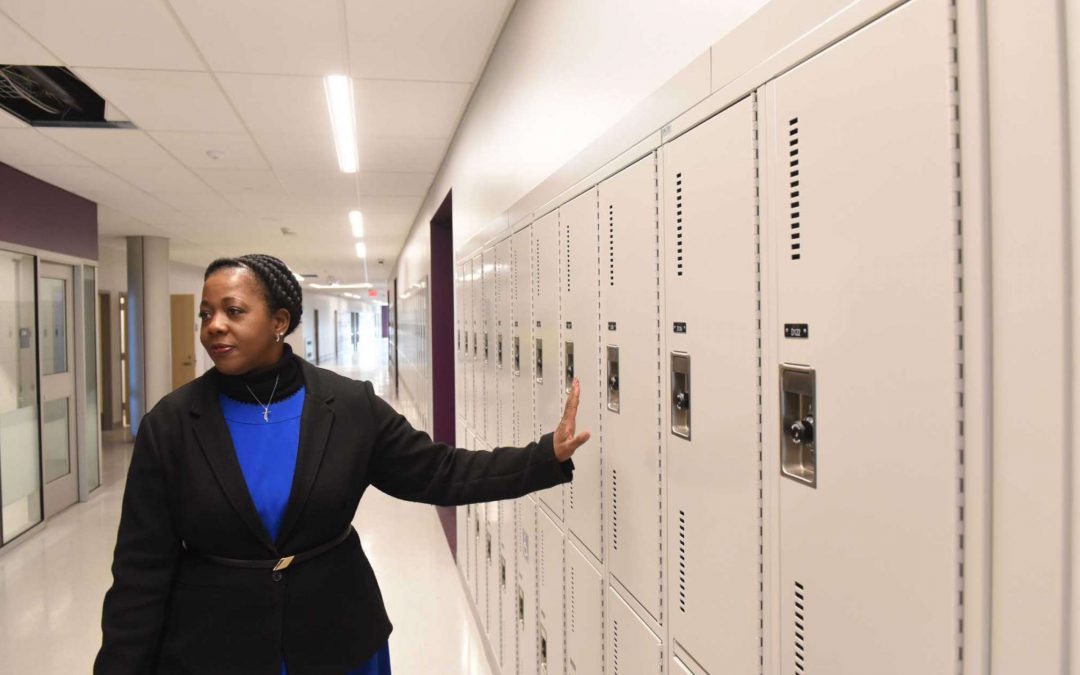The City School District of Albany relies on grants, partnerships and parents’ personal health care to maintain their school-based health centers in three of their middle schools — but Superintendent Kaweeda Adams anticipates an increase in demand while their K-12 students cope with stress and trauma during COVID-19.
“For the past six or seven months, we’ve been living in an uncertain environment and that uncertainty is multifaceted,” Adams said. “For some of our students it may be, ‘Where are we going to live?’ What are my health concerns other than COVID?’ People are living trauma every day.”
While the district has made a sustained effort to support their students’ mental health, aid from the federal government would allow them to open more school-based health centers to better anticipate students’ social, emotional and behavioral needs while going to school during a pandemic.
It’s been over two years since four members of Congress, including U.S. Rep. Paul Tonko, D-Amsterdam, and former U.S. Rep. John Faso, R-Kinderhook, introduced the School-Based Health Centers Reauthorization Act, which funds programs that provide mental health care services for adolescents. The bill was originally introduced in 2018, but is now moving through Congress. In a July 29 hearing in Washington, D.C., supporters testified that the legislation is essential as students head back to school during the pandemic.
“America’s school-based health centers ensure that millions of our nation’s students have direct access to critical health services, including mental health, when they need them,” Tonko said in an emailed statement. “As we continue to navigate the rough waters of this pandemic, we must take steps necessary to ensure any student required to attend classes in person not only has the resources and conditions they need to stay safe, but also the health services they need to maintain resilience and endure this unique burden being placed on them.”
The new version of the bill amends the Public Health Service Act and would fund school-based health centers until 2024.
“The authorization for school-based health centers lapsed in 2014, and it is important that we strengthen these programs with additional federal funding,” said Frank Pallone Jr., a Democrat from New Jersey who chairs the House’s Subcommittee on Health. “These health centers are a powerful tool for achieving health equity among children and adolescents who unjustly experience disparities in outcomes because of their race and family income.”
Robert Boyd, president of the School-Based Health Alliance, attended the hearing held by the House Committee on Energy and Commerce. He testified that 3.6 million children depend on school-based health centers, which offer an array of medical and mental health services to students primarily from low-income families.
“We must treat this pandemic as we would a mass incident like tornados, hurricanes or school shootings that wreak multiple levels of havoc on an entire community,” Boyd said. “Some of the pandemic’s harm is visible and immediately apparent, but other damage may be less visible, such as increases in depression, anxiety, sleep problems, hunger and stress caused by children’s struggles with online learning and social isolation.”
Damian Zuloaga, assistant professor of psychology at the University at Albany, studies how stress affects human cognitive functions, especially in adolescent brains. He said resources such as school-based health centers are essential during a pandemic to help students manage stress, which could prevent them from developing chronic mental illness later in life.
“Stress has been shown to affect a lot of the brain areas that are involved in emotional regulation and general cognitive functions, like learning and memory,” Zuloaga said. “Further down in life, or even very soon, chronic stress could lead to depression and anxiety.”
Zuloaga said adolescents’ prefrontal cortexes are particularly at risk, as adult brains aren’t fully matured until age 25.
“It’s important to emphasize that, in some ways, the high school adolescent brain is potentially more sensitive to the effects of chronic stress than an adult in terms of how it affects their [development] and behavior,” Zuloaga said.
While the bill moves through Congress, the Albany school district hopes to expand their partnership with Northern Rivers, a family services agency, to open more school-based health centers in their high school and in Harriett Myers Middle School.
Lori McKenna, superintendent of secondary education, said every school in the district has a student support team made up of psychologists, social workers, counselors, nurses and behavior specialists. She said they will also continue to offer “wraparound support specific to students’ needs” and schedule social and emotional teaching sessions while their students re-acclimate to class rooming learning — regardless if it’s in person or online.
Adams said mental health advocacy benefits not only the students and staff in schools, but the community as a whole.
“A healthy society is a progressive, prosperous society, just as an educated society is a healthy, prosperous society,” Adams said. “If we don’t address social and emotional well-being and mental health, we are really doing a disservice because we are not able to provide for our children those wraparound services that break down those systemic barriers to their success.”


